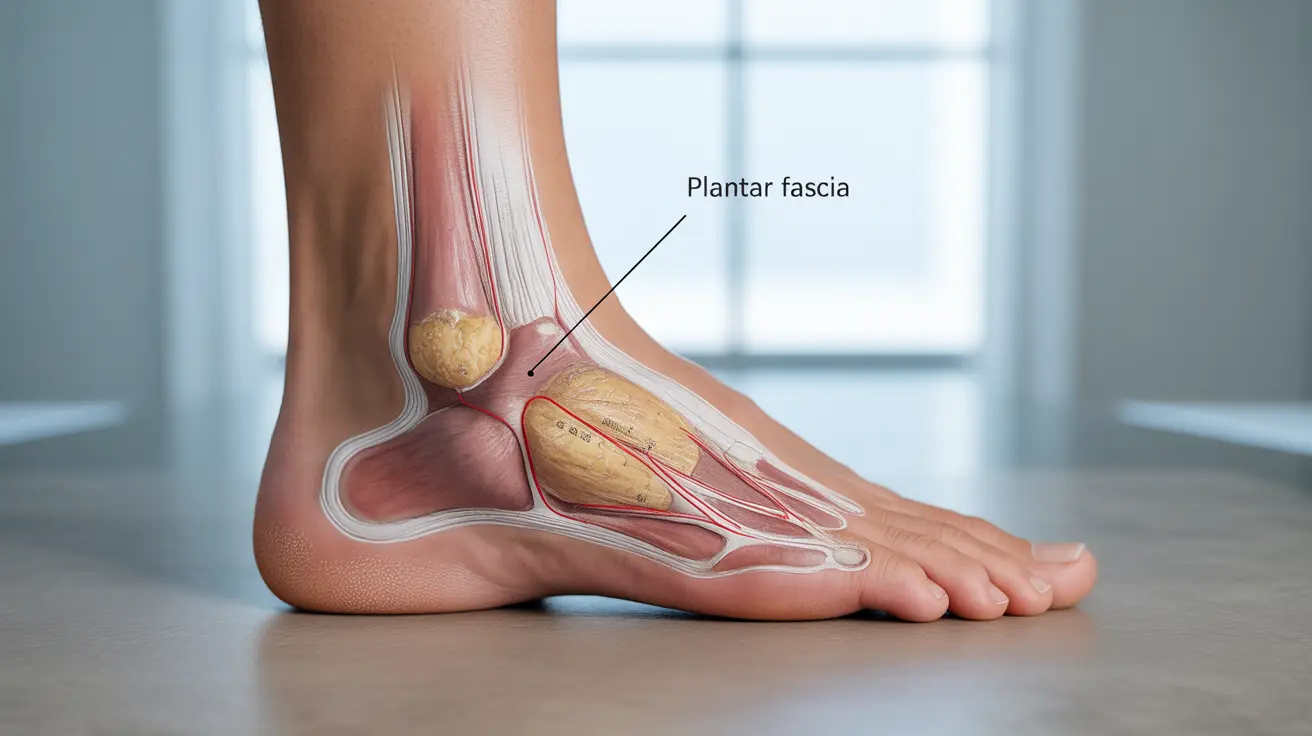Plantar fasciitis is one of the most common causes of heel pain, affecting millions of people worldwide. This condition occurs when the plantar fascia, a thick band of tissue connecting your heel bone to your toes, becomes inflamed or damaged. Understanding its symptoms, causes, and treatment options is crucial for effectively managing this painful condition.
Whether you're an athlete, someone who stands for long periods, or simply experiencing unexplained heel pain, learning about plantar fasciitis can help you take the right steps toward relief and prevention. Let's explore everything you need to know about this common foot condition.
Understanding Plantar Fasciitis Symptoms
The hallmark symptom of plantar fasciitis is a sharp, stabbing pain in the bottom of the foot near the heel. This pain typically follows a distinct pattern:
- Most severe with the first steps in the morning
- Increases after long periods of standing or sitting
- Often worsens toward the end of the day
- May be particularly noticeable after exercise
Many people also experience stiffness in the arch of the foot and a sensation of tightness that extends from the heel forward. The pain might temporarily subside during activity but typically returns with increased intensity afterward.
Risk Factors and Causes
Several factors can contribute to the development of plantar fasciitis:
Physical Characteristics
- Age (most common between 40-60 years)
- Excess weight putting additional stress on feet
- High arches or flat feet
- Tight Achilles tendons
Activity-Related Factors
- Occupations requiring prolonged standing
- Sudden increases in physical activity
- Sports with repetitive impact on feet
- Poor footwear choices
Professional Diagnosis Process
Healthcare providers typically diagnose plantar fasciitis through a combination of methods:
- Physical examination of the foot
- Review of medical history and symptoms
- Analysis of walking pattern (gait)
- Imaging tests (in some cases) to rule out other conditions
Effective Treatment Approaches
Conservative Treatments
Most cases of plantar fasciitis respond well to non-invasive treatments:
- Regular stretching exercises
- Ice therapy
- Proper footwear with adequate support
- Night splints
- Physical therapy
Medical Interventions
When conservative treatments aren't sufficient, medical professionals may recommend:
- Custom orthotics
- Corticosteroid injections
- Shock wave therapy
- In rare cases, surgery
Prevention Strategies
Taking proactive steps can help prevent plantar fasciitis or reduce its likelihood of recurring:
- Maintain a healthy weight
- Choose supportive footwear
- Gradually increase exercise intensity
- Regular foot stretching
- Address biomechanical issues early
Frequently Asked Questions
What are the common symptoms and signs of plantar fasciitis?
The most common symptoms include sharp heel pain that's worst in the morning, pain that increases after rest, and discomfort after long periods of standing or activity. The pain typically centers in the heel and may extend along the arch of the foot.
What causes plantar fasciitis and who is at risk for developing it?
Plantar fasciitis is caused by repetitive strain on the plantar fascia ligament. People at higher risk include those who are overweight, athletes, individuals with certain foot structures (flat feet or high arches), and people who spend long hours on their feet.
How is plantar fasciitis diagnosed by doctors?
Doctors typically diagnose plantar fasciitis through physical examination, discussing symptoms and medical history, and analyzing walking patterns. They may sometimes order imaging tests to rule out other conditions.
What are the most effective treatments for plantar fasciitis pain relief?
The most effective treatments include a combination of stretching exercises, ice therapy, proper footwear, and rest. Additional treatments may include physical therapy, custom orthotics, and in some cases, medical interventions like corticosteroid injections.
How can plantar fasciitis be prevented or its risk reduced?
Prevention strategies include maintaining a healthy weight, wearing supportive shoes, gradually increasing exercise intensity, regular stretching of the feet and calves, and addressing any biomechanical issues early with proper footwear or orthotics.




